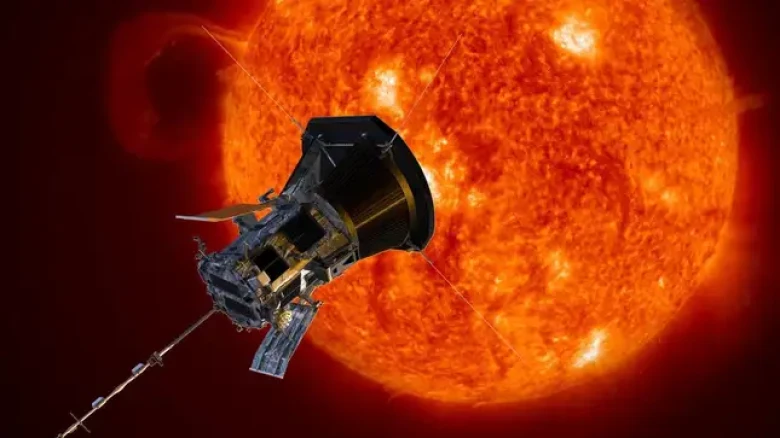Regional

NASA's Parker Solar Probe has flown close enough to the sun to detect the minute structure of...
Digital Desk: NASA's Parker Solar Probe has flown close enough to the sun to detect the minute structure of the solar wind close to where it is formed at the sun's surface, revealing details that are lost as the wind departs the corona as a uniform blast of charged particles, according to a new study.
The Parker Solar Probe, which launched in 2018, was designed to determine what the turbulent solar wind looks like near the sun's surface, or photosphere, and how the wind's charged particles—protons, electrons, and heavier ions, primarily helium nuclei—are accelerated to escape the sun's gravity.
The sun-kissing probe also aimed to resolve two competing ideas for the genesis of the high-energy particles that constitute the solar wind: magnetic reconnection or acceleration by plasma or Alfven waves.
Understanding how and where solar wind originates can aid in the prediction of solar storms, which, while producing beautiful auroras on Earth, can also cause havoc with satellites and electrical facilities.
To accomplish this, the sun-kissing probe is required to reach closer than 25 to 30 solar radii, or around 13 million miles.
"Once you get below that altitude, 25 or 30 solar radii or so, there's a lot less evolution of the solar wind, and it's structured better—you see more of the imprints of what was on the sun," said Stuart D. Bale, a physics professor at the University of California-Berkeley.
In 2021, the Parker probesa devices detected magnetic field bends in the Alfven waves that appeared to be related to locations where solar wind is created.
By the time the probe had travelled around 12 solar radii from the sun's surface—5.2 million miles—the data showed that it was passing through material jets rather than turbulence.
The jets were tracked back to supergranulation cells in the photosphere, where magnetic fields clumped together and funnelled into the sun, which scientists described as "like seeing jets of water emanating from a showerhead through the blast of water hitting you in the face."
"The big finding is that it's magnetic reconnection within these funnel structures that is providing the energy source of the fast solar wind," Bale said in a research to be published in the journal Nature.
According to the teams, the Parker probe's equipment will be destroyed if it approaches the sun any closer than 8.8 solar radii above its surface, or around 4 million miles.
Bale anticipates that data from that height will help to solidify the team's conclusions, as the sun is currently hitting solar maximum due to its magnetic field flip, which happens every 11 years, and its activity will become much more chaotic, concealing the processes the scientists are attempting to see.
Leave A Comment